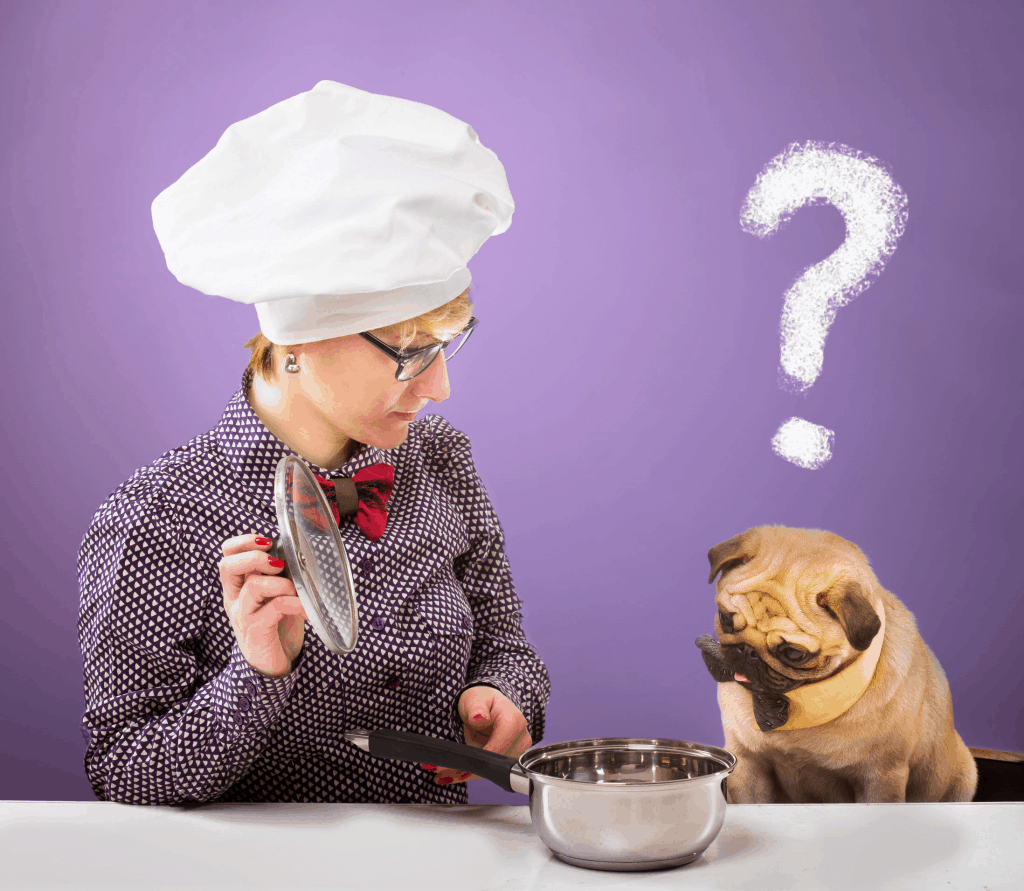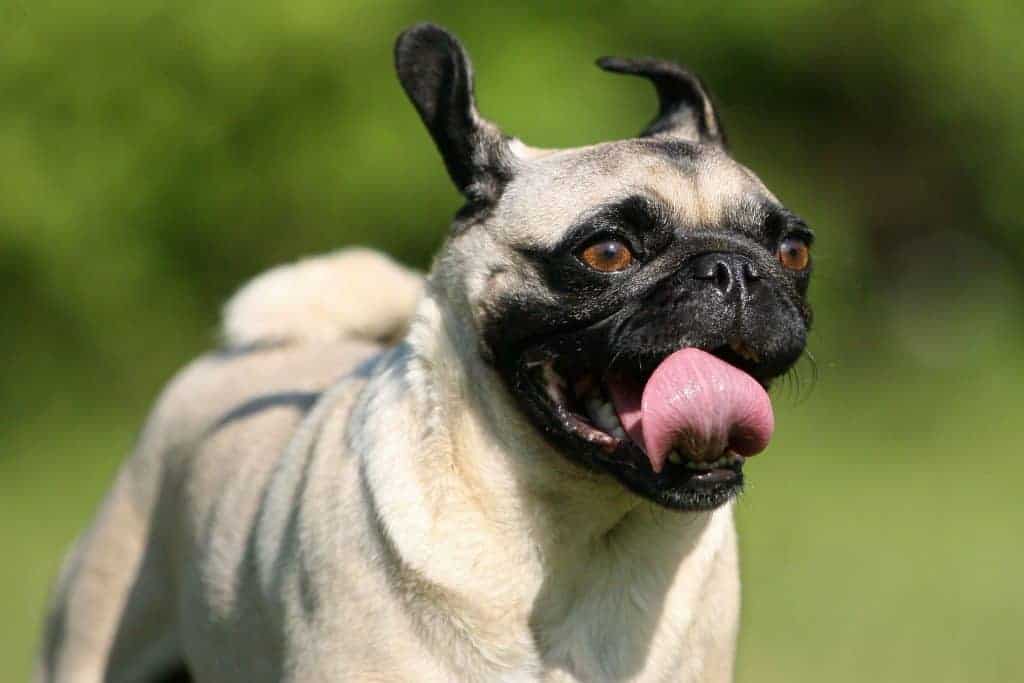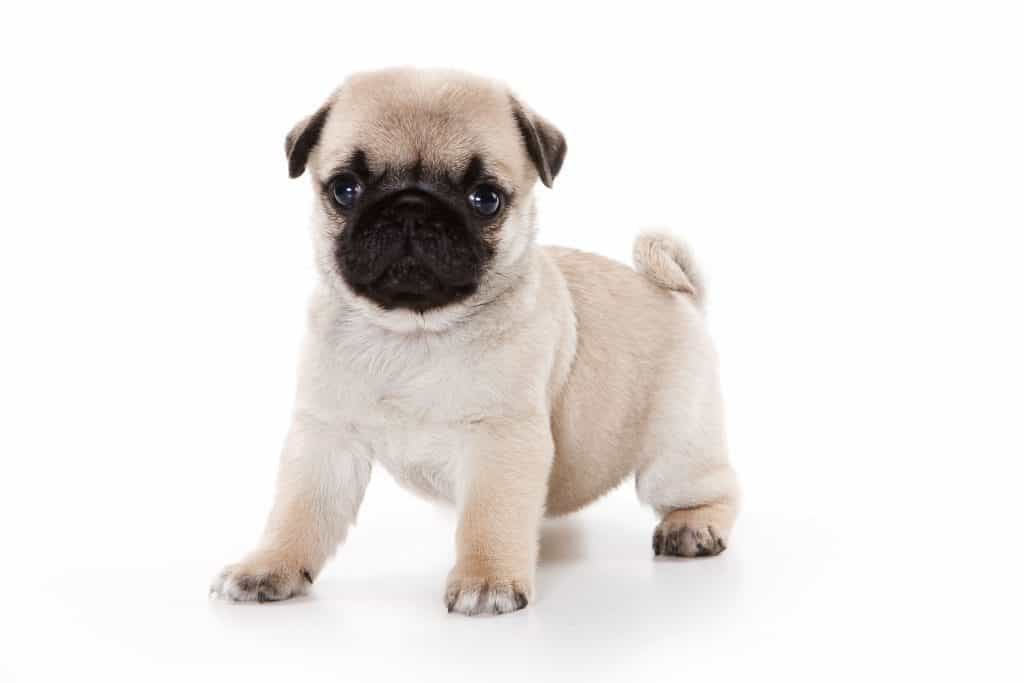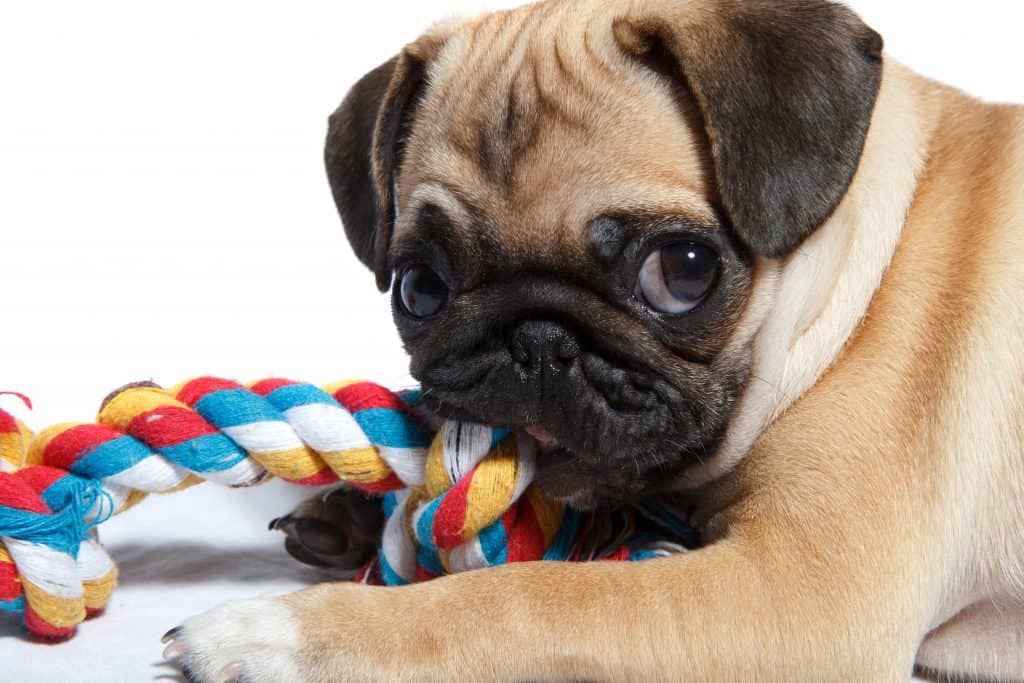what do pugs eat? The Ultimate Guide to What Pugs Can (And Can’t) Eat
Pugs are different than other types of dogs. Besides looking different, they have different behavioral patterns and a different diet. There are certain things that pugs cannot eat that other dog breeds can. Some of this is due to their physical features.

What can pugs eat, when should they eat, and how often should pugs be fed?
Pugs can be fed most organic things, such as fruits and vegetables, but there are some restrictions when it comes to these. Every kind of meat is an available option, although cooking it is an advisable precaution. Pugs should be fed three times a day, with two snacks in between those meals.
While it is common to only feed small dogs twice a day, pugs need a little more than just that. There are certain foods that need to be avoided to have a healthy pug, and there are some foods that will help keep your dog healthy and fit. What do pugs eat to be at their healthiest? Here’s what you need to know.
Lifestyle
Pugs are social animals but are less social than other toy dogs, the classification they find themselves in. They have somewhat of a drier sense of humor.
For the most part, they are easy dogs to live with. They are small enough that they are not too much danger to children and ruining things, but they are also compact and solidly built that they are not in danger of being hurt too easily.
Pugs are not very active, but they will need a small yard, or somewhere to be outside and run around in for a little less than half an hour. They do not tend to dig, so your yard is safe with them there.
They are stubborn dogs, which can sometimes be hard to deal with, but for the most part, they tend to listen and aim to please, if trained correctly, of course.
Pugs have a very likely chance of becoming obese. They usually do not realize that they are full, and will over-eat if they are not watched carefully.
Once you buy a pug, be ready to watch their weight even more than you watch your own. Pugs will eat anything that they can get into their mouth, which is another problem.
Pugs are sensitive to a lot of foods that otherwise should be fine for dogs, so watching both the amount and what it is they eat is important. Below is some information that will allow you to know what is ok to feed your pug, and what should definitely be avoided.
Try feeding your pug healthy treats like raspberries, broccoli, or sweet potatoes. It’s easier to get family and friends to give your pug a healthy slice of apple or pear or watch your dog try out spinach or zucchini for the first time than to convince your family to reduce the amount of food they offer as treats.
When to Feed Your Pug
Pugs are dogs that will need to eat three times a day. They need food to keep themselves going, but be sure not to feed them too much. They will get obese and tend to very quickly.
Feed pugs three times a day after you eat your meals. This will help you to remember to feed the dog, but also will help keep them on something of a regular schedule, which can help them not get obese or overweight.
Besides the three meals a day, pugs can also benefit from snacks throughout the day. If the snacks are regulated to two times a day, this can help the pug get through a day without eating a lot of meals.
The snacks can also help increase your friendship with your pug. Dogs tend to listen to the old saying, “never bite the hand that feeds you.”
What Not to Feed Your Pug
There are a number of food items that are not good for your pug to eat. These include a lot of fruits and some other random items. Be careful feeding your pug anything not designed specifically for a dog because it might just be fatal for them.
Fruits can be very good for pugs. They are high in natural sugars, which can give them the energy they will need to be active and not get fat due to the added sugar content of other foods.
There are a lot of fruits, however, that are not good for pugs. The first on the list is grapes. It is not exactly known why grapes are bad for pugs, but it might have something to do with the skin on the grapes. It would be easy for a pug to choke on a grape skin.
The bad fruits for your pug
Avocados, mushrooms, green tomatoes, and raw potatoes are not good for pugs, or dogs in general. There is a chemical in all of those foods that affect the pug negatively.
Pugs love treats, and there are a lot of benefits to feeding your pug treats, especially after he does something that is praiseworthy. But be careful when feeding your pug treats. Any treat meant for a larger dog, or even a medium dog, can help with getting your pug fat. There are a lot of calories in one of those treats that could end up loading the pug up.
Other dangers to pugs are fat trimmings, which are too much fat for your pug to handle at once. Raw fish is also something that should not be eaten. There is some kind of danger, even without the danger of getting the sharp bones splintering as they are eaten.
Caffeine is very deadly to dogs. It is a known poison, but it is nowhere poisonous to kill humans, making it somewhat safe to consume. For most other animals, however, caffeine is a very deadly poison. It does not take much caffeine to kill a pug. Just one diet pill or a tea bag is enough to kill a pug.
Macadamia nuts are the next item on the list. Once again, there is not a lot of knowledge of why the nuts are bad for pugs, but there is a lot of evidence saying that they are very bad for them.
Symptoms of macadamia nut poisoning include weak hind legs, shaking, and vomiting. Dogs can recover from this, and will only be different for a few days.
What To Do If Dangerous Foods Are Consumed
Immediately after noticing that your pug has eaten something he/she should have not eaten, call your vet or the ASPCA Animal Poison Control Center at (888) 426-4435.
Once the professionals have your dog, they will be able to get the poisonous substances out of the dog’s system quickly.
What to Feed Your Pug

Pugs (and all dogs) are the descendants of wild wolves, meaning they can eat a lot of different things that humans cannot and not get sick. Some of these items include raw meats, bones, and different grains.
But there are a lot of the same types of foods that pugs can eat that we can, too. Out of the vegetable class, pugs enjoy eating baby carrots a lot.
There is a benefit of allowing your pug to eat baby carrots. They are good for your pug’s teeth and can help with keeping strong teeth.
All dogs can also eat green beans, something I learned at a young age with the family dog. They will eat them raw, but they also like them cooked and covered in salt, or at least mine did.
Pugs can also eat potatoes, but only cooked ones. Potatoes are cheap, so it can be used as a filler along with a combination of raw meats and shredded bones, sort of like steak and potatoes.
Pugs also can enjoy dry dog food for smaller dogs. The kibble will be filled with the correct amount of calories, fat, and will be a good size to not ruin their teeth.
Wet food can also be a good option for pugs, but this will have to be heavily regulated. Pugs are already susceptible to obesity, and wet dog foods contain high amounts of fat and other fattening substances.
Most every kind of meat is good for pugs, but be sure to feed them more lean than fatty. Chicken is very good for dogs, and most enjoy eating it very much. The same could be said about beef, lamb, and some fishes.
For the occasional treat, try hot dogs. Pugs love the taste of hot dogs, but because they are so fatty, it is important not to give a lot to them on a regular basis.
Other good treats are rawhide, pig ears, and real beef bones. All of these are good for gnawing on and will reduce their hunger levels. Pugs, like most dogs, enjoy cheese. Be careful feeding your pug cheese, however, because it tends to make canines a little gassy.
Rawhides are dog treats that are made of the hide of cows and horses. There is not much risk for pugs chewing these, but there is a concern that if they swallow a piece too big, it could block their throat and cause pain. Most times, however, a vet can easily remove it through their throat.
Pig ears have a common problem, but they are also more prone to splintering and could potentially hurt the inside of your pug.
| What to Feed Your Pug | What Not to Feed Your Pug |
| Turkey | Grapes |
| Oatmeal Kibbles | Peach pits |
| Baby Carrots | Chicken bones |
| Green Beans | Avocados |
| Cooked Potatoes | Mushrooms |
| Chicken | Raw Potatoes |
| Beef | Large Dog treats |
| Lamb | Fat Trimmings |
| Salmon and Other Fish | Caffeine |
| Rawhide | Tea |
| Pig Ears | Macadamia Nuts |
| Real Beef Bones | Chocolate |
| Hot Dogs | Small bones that have been cooked |
| Pumpkin | Onions |
| Kale | |
| Strawberries |
The Best Foods for Pugs

There are some foods that pugs like, but those are usually very high in fat content and calories. While it is okay to let them eat these things sometimes, it is better to try to find some foods that are tasty and healthy.
When it comes to the best foods for pugs, turkey and oatmeal kibble are great option. There are a few companies that make this type of food, but the best company with one of the best prices was Wellness Complete.
They have a Turkey and Oatmeal line that has the needed nutritional balance for a healthy pug and is also small enough not to damage them.
It is important to get a kibble that is easy to pick up. Pugs rely on inhaling their food, and there is little biting involved, due to their short muzzles. There are foods designed specifically to make sure the pug can pick it up easily.
Royal Canin’s Adult Pug small kibble line is designed to be small enough to be inhaled, but it is big enough that it will not further the breathing problems that pugs have anyways.
But this brand does not have the best nutritional benefits. There is another brand that is great. AvoDerm has a non-specific kibble line that is great for pugs. The Small breed kibble is made of brown rice, oatmeal, and chicken.
A common problem with pugs is their issue with obesity, so it might become necessary to watch their weight and change their diet to get them healthier again.
Wellness has a different line of kibble designed to help dogs lose weight. The Core Natural is grain free with reduced fat. The serving size is a little larger for this kibble, but it has a much lower fat content as well as a reduced calorie content.
By putting your pug on this kibble, they should be able to loose weight.
Homemade and Raw Diets

Sometimes it may be better to create your dog’s meals yourself. That way you know exactly what your dog is eating, which can make sure they are getting what they need, and nothing more. The raw food diet has become popular thanks to having fewer calories but more protein.
Speak to your vet before deciding to do this, however, because if it is not done correctly, there can be bad consequences for your pug. Focus on raw meats and bones. This brings it back to how dogs ate before humans domesticated wolves.
There are many claimed benefits to a raw diet for your pug, such as a shinier coat, healthier skin, cleaner teeth (because of chewing the bones), and more energy. For the most part, this is true. There is not a lot that can go wrong when feeding your pug this diet.
Be careful what you feed your pug. Out of all the types of dog, pugs are one of the more fragile ones. They can have allergies to specific things, so look out for those once a vet as determined what they are.
Keep this in mind when introducing new foods to pugs, and look for signs of allergies and reaction.
Related Questions
How often should I feed my pug?
Pugs should be fed three times a day with serving sizes of a third of the suggested amount given on the bag of kibble. If the pug is on a raw diet or another homemade diet, consult with the pug’s vet before setting a plan in stone.
Should I feed my puppy pug cow milk?
Pugs, like all dogs, can develop an intolerance to lactose, much like humans and should not have milk. The symptoms can include vomiting, rashes on their underside, and diarrhea.
There is a chance that your pug will not be lactose intolerant, and in this case it is okay, but be careful because it might develop further along in their life.
Related Articles Just For You!
If you found this article about pug diets helpful, I suggest checking out one of these other articles about pugs.




